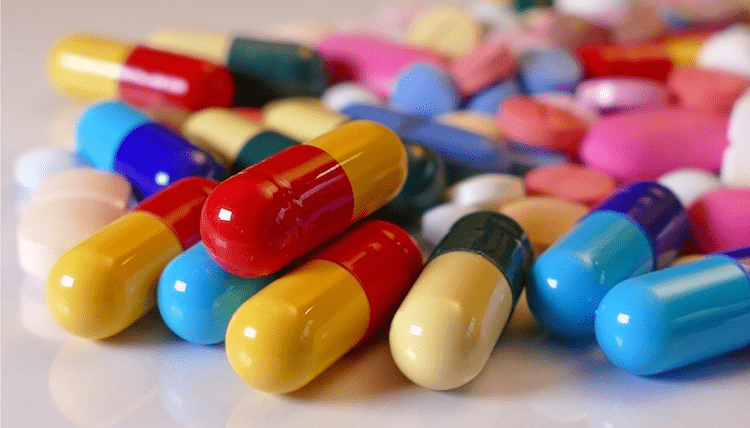US Generics Market: Opportunities and Challenges
In 2017, the FDA approved a record 1,027 abbreviated new drug applications, 843 of which were fully approved, and is working to further facilitate generic-drug development and approval.
Reauthorization of the Generic Drug User Fee Amendments (GDUFA II), which provides user fees to augment FDA resources for generic-drug reviews, and the FDA’s Drug Competition Action Plan, which seeks to remove further barriers in generic-drug development and review, were two key developments in 2017 to spur generic-drug approvals.. So what has been the upside and downside? DCAT Value Chain Insights takes an inside look.
Uptick in generic-drug approvals in the US
The US has seen a large increase in generic-drug approvals. In 2017, the US Food and Drug Administration (FDA) approved the most generic-drug applications ever, 1,027 abbreviated new drug applications (ANDAs), with 843 fully approved applications and 184 tentatively approved applications, according to information from the FDA. The number of approvals in 2017 broke the previous record high set in 2016 by 214 approvals when the FDA approved 813 ANDAs: 630 full approvals and 183 tentative approvals. The 2017 approvals included 80 “first generic” drugs, which are the first generic alternatives to a brand-name product. In 2017, the FDA updated its policy to prioritize the review of generic applications up to the third generic approval of a drug as a means to further encourage increase drug competition.
In a recent report, the agency estimates total cost-savings associated with 2017 ANDA approvals to be $11.8 billion through February 2018, with $8.8 billion in savings occurring through December 2017. It. estimates total cost-savings over one full year after each generic approval in 2017 to be $16.0 billion (1).
Policy changes to increase generic-drug approvals
The FDA has put forth several measures to improve the generic-drug development and approval process. Noteworthy in 2017 was the first reauthorization of the Generic Drug User Fee Amendments (known as GDUFA II), which authorized the continued collection of user fees from generic-drug manufacturers to provide additional resources to the FDA for generic-drug reviews. GDUFA I was first enacted in 2012 and was authorized through fiscal year 2017, and GDUFA II now runs fiscal year 2018 through fiscal year 2022.
Under GDUFA, FDA commits to performance goals, and the industry agrees to pay user fees each year it is involved in the program. The GDUFA performance goals include time frames within which FDA has committed to take a first action on an ANDA, an amendment to an ANDA, and prior approval supplements (PASs), which are post-approval changes requiring a supplemental submission and approval. The agency meets these time frames by one of four actions: (1) granting an approval; (2) granting a tentative approval (e.g., when an ANDA is ready for approval but FDA is blocked from approving it because of remaining patents or exclusivities related to the reference listed drug); (3) issuing a complete response letter that identifies deficiencies in an application that will prevent FDA from granting an approval and then communicating these deficiencies to the applicant in a complete response letter; or (4) making a “refuse-to-receive” decision because the ANDA is not sufficiently complete to permit a substantive review.
FDA said it met or exceeded all GDUFA I commitments to date. In 2017, FDA approved 427 PASs, and communicated with industry through more than 4,500 information requests and more than 1,900 complete response letters that detailed issues that needed to be resolved by the applicant before FDA could grant an approval. FDA responded to a record of more than 2,700 controlled correspondence letters (FDA’s answers to product-development questions) in 2017, up from 1,800 in 2016.
FDA Commissioner Scott Gottlieb has made generic drugs and drug pricing an agency priority and introduced the Drug Competition Action Plan (DCAP) in June 2017 to propose ways in which the agency would seek to improve the process for generic-drug development, review, and approval. One measure to increase competition by the FDA’s Office of Generic Drugs (OGD) was the publication of a list of off-patent, off-exclusivity branded drugs without approved generics. It first pubished this list in June 2017 and is updating and maintaining this list to improve transparency and encourage the development and submission of ANDAs in markets with limited competition. OGD also implemented policies to expedite the review of greater numbers of generic-drug applications when competition is limited. OGD is also charged under GDUFA II commitments to enhance development and review of ANDAs for complex generic drug products, which can require more review cycles. Part of the DCAP’s plan is to review the OGD’s Hatch-Waxman implementation and gain input on places where FDA’s regulations, including the standards and procedures related to generic-drug approvals, are being used in ways that may create obstacles to generic-drug access. The OGD held a public meeting on that in June 2017 and is reviewing comments from the comment period that ended in November 2017.
Last month (May 2018), as part of its DCAP implementation, the FDA outlined new efforts by the agency to increase access of samples of branded drugs needed by generic-drug developers for testing and also moved to increase transparency and reform elements of the REMS (Risk Evaluation and Mitigation Strategy) system. REMS is a program that the FDA implements for certain drugs to manage a known or potential serious risk associated with a medicine and to enable patients to have continued access to such medicines by managing their safe use.
With regard to testing, access to drug samples arise as generic-drug developers need samples of the brand drug to develop their generic product and/or to conduct testing to show that their product is bioequivalent to the brand drug for FDA approval. A generic-drug developer generally needs 1,500 to 5,000 units of the brand drug to perform what are often relatively straightforward studies for FDA approval, according to information from the FDA, which noted that some branded drug companies have limited access to these samples for testing. To increase transparency, the FDA has published a list of companies that have potentially been blocking access to the samples of their branded products. It also proposed changes to the REMs process to address limitations on distribution of samples.
Also, last month (May 2018), the FDA issued two draft guidances to improve the REMS process to facilitate generic-drug development and approval. The measures by the FDA seek to eliminate what it sees as potential misuse of the REMS system to delay entry of generic drugs. Under current practice, brand- and generic-drug makers are required to develop a single shared REMS program when a generic drug seeks approval and the brand drug has a REMS associated with it. This requirement applies when a generic-drug applicant wants to market a generic version of a drug that has REMS with certain requirements or activities known as “Elements to Assure Safe Use” (ETASU). The current law requires that the brand and generic companies use a single, shared system REMS, unless the FDA waives that requirement and permits the generic drug to use a separate, comparable REMS program. The first draft guidance describes general principles and recommendations to assist sponsors with developing these programs. The FDA says its goal is to improve the clarity and efficiency for developing shared system REMS, which will enable timelier market entry for products that are part of these REMS. The second draft guidance describes when and how the FDA will consider waiving the single, shared system requirement, and how generic applicants can request a waiver.
Manufacturing and generic drugs
A potential downside to increased product competition was addressed by researchers from three universities that examined the relationship between increased product competition and manufacturing issues. Using empirical research in a study that was published last month (May 2018), the researchers evaluated the relationship between increased product competition in the generic-drug industry and product recalls caused by manufacturing-related problems. The research, published in the Journal of Operations Management, also raised concerns that generic-drug makers may be underreporting discretionary recalls due to competitive pressures(2).
“Extreme price competition in the generic pharmaceutical market has some unexpected risks that regulators and lawmakers may not have foreseen when pushing for cheaper drugs,” said George Ball, Assistant Professor of Operations and Decision Technologies at the Indiana University Kelley School of Business and the study’s lead author, in commenting on the study in a May 30, 2018 Indiana University press release. Other authors of the paper are Rachna Shah, Associate Professor of Supply Chain and Operations at the University of Minnesota’s Carlson School of Management, and Kaitlin Wowak, Assistant Professor in the Department of Information, Analytics and Operations at the University of Notre Dame’s Mendoza College of Business.
The researchers assessed the impact of the Drug Price Competition and Patent Term Restoration Act (i.e., the Hatch-Waxman Act of 1984), which was the regulatory pathway created for the approval of generic drugs in the US. The authors’ study of 939 recalls at 64 firms over a 12-year period found that generic-drug companies have more Class I and II manufacturing recalls as designated by the US Food and Drug Administration. A Class I recall is a situation in which there is a reasonable probability that the use of, or exposure to, a violative product will cause serious adverse health consequences or death. A Class II recall is a situation in which use of, or exposure to, a violative product may cause temporary or medically reversible adverse health consequences or where the probability of serious adverse health consequences is remote. The researchers used data from the FDA’s annual Orange Book, which contains all approved pharmaceutical products for sale in the US and classifies whether a drug is a new drug application or an ANDA. They compared its information with recall data from 2002 to 2014.
The authors assert that increased competition among generic drugs may relate to the higher level of manufacturing issues, “This may explain why firms producing a higher proportion of generic products may have higher rates of recalls,” Shah said in the university press release. “These decisions may include reducing labor costs, hiring less experienced employees, or lowering maintenance costs by servicing manufacturing equipment less often. Firms may also respond to intense competition by purchasing lower-cost ingredients.”
The researchers also found that the relationship between product competition and manufacturing-related recalls is not universal but is contingent upon managerial discretion. “This finding may indicate that while price competition via more generic drugs leads to more serious manufacturing problems in the production process, it may also encourage managers not to announce recalls when they have discretion,” according to the university release in explaining the research. The researchers assert that their findings suggest the need for changes in processes used by the FDA to requiring more detailed and precise documentation about how a generic drug will be produced and manufacturing inspection procedures for generic drugs.
References
1. US Food and Drug Administration, Estimating Cost Savings From Generic Drug Approvals In 2017 May 2018.
2. G. Bell, R. Shah, and K. Wowak, “Product Competition, Managerial Discretion and Manufacturing Recalls in the U.S. Pharmaceutical Industry,” Journal of Operations Management , online May 30, 2018, https://doi.org/10.1016/j.jom.2018.04.003






